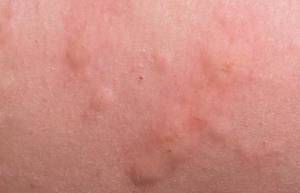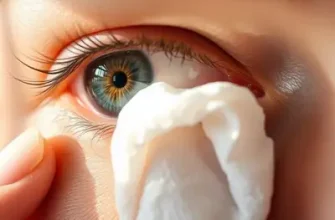The rash around the ankles can be caused by several factors, including allergic reactions to certain substances, such as detergents or skincare products. It can also be a result of skin conditions like eczema or contact dermatitis. Additionally, fungal infections like athlete’s foot can lead to a rash around the ankles.
Symptoms of rash around the ankles may include redness, itching, swelling, and the formation of blisters or scales. In some cases, the rash may become painful or start to ooze.
While a rash around the ankles is not usually dangerous, it can cause significant discomfort and affect daily activities. Therefore, it is crucial to seek proper treatment to alleviate symptoms and prevent further complications.
Treatment options for rash around the ankles may include applying topical creams or ointments, taking oral medications, using cold compresses to reduce inflammation, and keeping the affected area clean and dry.
To prevent rash around the ankles from recurring, it is important to practice good hygiene, avoid potential irritants or allergens, wear breathable footwear and socks, and maintain proper foot care.
What is Rash Around Ankles
A rash around the ankles refers to a skin condition characterized by redness, inflammation, and irritation in the area surrounding the ankles. This condition can be caused by various factors including allergies, infections, irritants, and underlying medical conditions.
When a person develops a rash around the ankles, it is important to identify the underlying cause in order to determine the appropriate treatment. Allergic reactions to certain substances such as detergents, soaps, or fabrics can result in a rash around the ankles. Infections caused by bacteria or fungi can also lead to a rash in this area. Additionally, certain medical conditions like eczema or psoriasis can manifest as rashes around the ankles.
The presence of a rash around the ankles can cause discomfort, itchiness, and even pain. It may also be accompanied by other symptoms such as swelling or blisters. If left untreated, the rash may worsen or spread to other parts of the body.
List of Causes of Rash Around Ankles
Rashes around the ankles can be caused by a variety of factors. Understanding the underlying causes is crucial in determining the appropriate treatment and prevention methods. Here are some common causes of ankle rashes:
- Contact dermatitis: Exposure to certain irritants or allergens, such as detergents, soaps, or chemicals in footwear or socks, can lead to contact dermatitis. This inflammatory skin condition can cause redness, itching, and a rash around the ankles.
- Eczema: Also known as atopic dermatitis, eczema is a chronic condition characterized by patches of dry, itchy skin. It can affect any part of the body, including the ankles.
- Insect bites: Mosquitoes, ticks, fleas, and other insects can leave behind itchy bites that may result in a rash around the ankles.
- Fungal infections: Fungi thrive in warm and moist environments, making the feet and ankles susceptible to fungal infections like athlete’s foot. This can cause redness, itching, and a rash.
- Allergic reactions: Some individuals may develop ankle rashes as a result of an allergic reaction to certain foods, medications, or even insect stings.
- Psoriasis: This autoimmune condition causes rapid skin cell turnover, leading to the development of thickened patches of skin with redness and scaling. Psoriasis can affect the ankles as well.
List of Symptoms of Rash Around Ankles
Rashes around the ankles can manifest in various ways, and recognizing the symptoms is crucial for proper diagnosis and treatment. Here are some common symptoms associated with ankle rashes:
- Itching: One of the most prevalent symptoms of ankle rash is intense itching. The affected area may become red and inflamed due to scratching.
- Redness and inflammation: Rashes around the ankles often present as red, swollen patches on the skin. The area may feel warm to touch and appear irritated.
- Blisters or bumps: In some cases, ankle rashes may develop fluid-filled blisters or raised bumps. These can be painful and cause discomfort while walking.
- Dry or scaly skin: The skin around the ankles may become dry, flaky, or scaly. This can result in cracking or peeling, leading to further irritation.
- Rash spreading: The rash may gradually extend beyond the ankles, affecting the lower legs or even other parts of the body.
- Discoloration: In certain instances, ankle rashes can cause changes in skin color, such as darkening or lightening of the affected area.
Is It Dangerous?
The presence of a rash around the ankles may raise concerns about its potential dangers. While most cases of ankle rash are not considered life-threatening, it is important to understand that the severity and underlying cause of the rash can vary. In some instances, ankle rashes may indicate an underlying medical condition or infection that requires prompt medical attention.
Certain types of rashes, such as those caused by allergic reactions or infections, can spread and worsen if left untreated, states iytmed.com. These rashes may result in discomfort, itching, pain, and even complications if not properly addressed. Additionally, if the rash is accompanied by other symptoms like fever, difficulty breathing, or swelling in the ankles, it may indicate a more serious condition that requires immediate medical evaluation.
How to Treat Rash Around Ankles
When it comes to treating rash around the ankles, there are several effective methods that can help alleviate symptoms and promote healing. One of the first steps in treating ankle rash is to identify the underlying cause. If the rash is caused by an allergic reaction or irritant, it is important to avoid contact with the allergen or irritant to prevent further irritation.
Topical treatments such as corticosteroid creams or ointments can be applied directly to the affected area to reduce inflammation and itching. These medications work by suppressing the immune system and reducing the body’s inflammatory response. It is important to follow the instructions provided by a healthcare professional when using these medications, as prolonged use or overuse can lead to skin thinning and other side effects.
In addition to topical treatments, keeping the affected area clean and dry is essential for proper healing. This can be achieved by gently washing the area with mild soap and water, patting it dry with a clean towel, and avoiding excessive moisture or sweating.
If the rash is accompanied by severe itching or discomfort, an oral antihistamine may be recommended to alleviate symptoms. These medications work by blocking histamine receptors in the body, reducing itching and swelling.
In cases where the rash does not improve with home remedies or over-the-counter treatments, it is important to seek medical attention. A healthcare professional can provide a proper diagnosis and prescribe stronger medications if needed.
It is crucial to avoid scratching the rash, as this can worsen symptoms and increase the risk of infection. If necessary, wearing loose-fitting clothing and avoiding activities that may cause excessive friction or irritation can help prevent further aggravation of the rash.
How to Prevent Rash Around Ankles
To prevent rash around the ankles, it is essential to adopt a proactive approach towards maintaining good foot hygiene and taking preventive measures. Firstly, it is crucial to keep the feet clean and dry. After washing the feet, ensure they are thoroughly dried, especially between the toes, as moisture can create a breeding ground for bacteria and fungi, states Reyus Mammadli. Additionally, wearing clean socks made from breathable materials such as cotton or moisture-wicking fabrics can help keep the feet dry.
Wearing well-fitting shoes that provide proper support and ventilation is also essential. Tight or ill-fitting shoes can cause friction and irritation, leading to rashes. It is advisable to avoid sharing footwear or personal items like socks or towels with others to minimize the risk of infections.
Regularly inspecting the feet for any signs of redness, swelling, or rashes can help identify potential issues early on. If you notice any abnormalities or persistent rashes, it is important to seek medical advice promptly.
Furthermore, taking precautions in environments where you may be exposed to irritants or allergens can be beneficial. For example, if you are allergic to certain plants or chemicals, wearing protective footwear or using barrier creams can prevent contact dermatitis.
Conclusion
In conclusion, dealing with a rash around the ankles can be a frustrating and uncomfortable experience. However, by understanding the causes, symptoms, and treatment options, individuals can effectively manage and alleviate this condition. It is important to remember that a rash around the ankles can have various underlying causes, ranging from allergic reactions to skin infections. Therefore, it is crucial to consult with a healthcare professional for an accurate diagnosis and appropriate treatment plan.
To treat a rash around the ankles, individuals may need to use over-the-counter creams or ointments specifically designed for skin irritations. In more severe cases, prescription medications or topical steroids may be necessary. Additionally, practicing good hygiene, keeping the affected area clean and dry, and avoiding allergens or irritants can help prevent further aggravation of the rash.
As with any medical condition, prevention is key. By taking preventative measures such as wearing breathable footwear, avoiding tight socks or shoes, and regularly moisturizing the skin, individuals can reduce their risk of developing a rash around the ankles.









